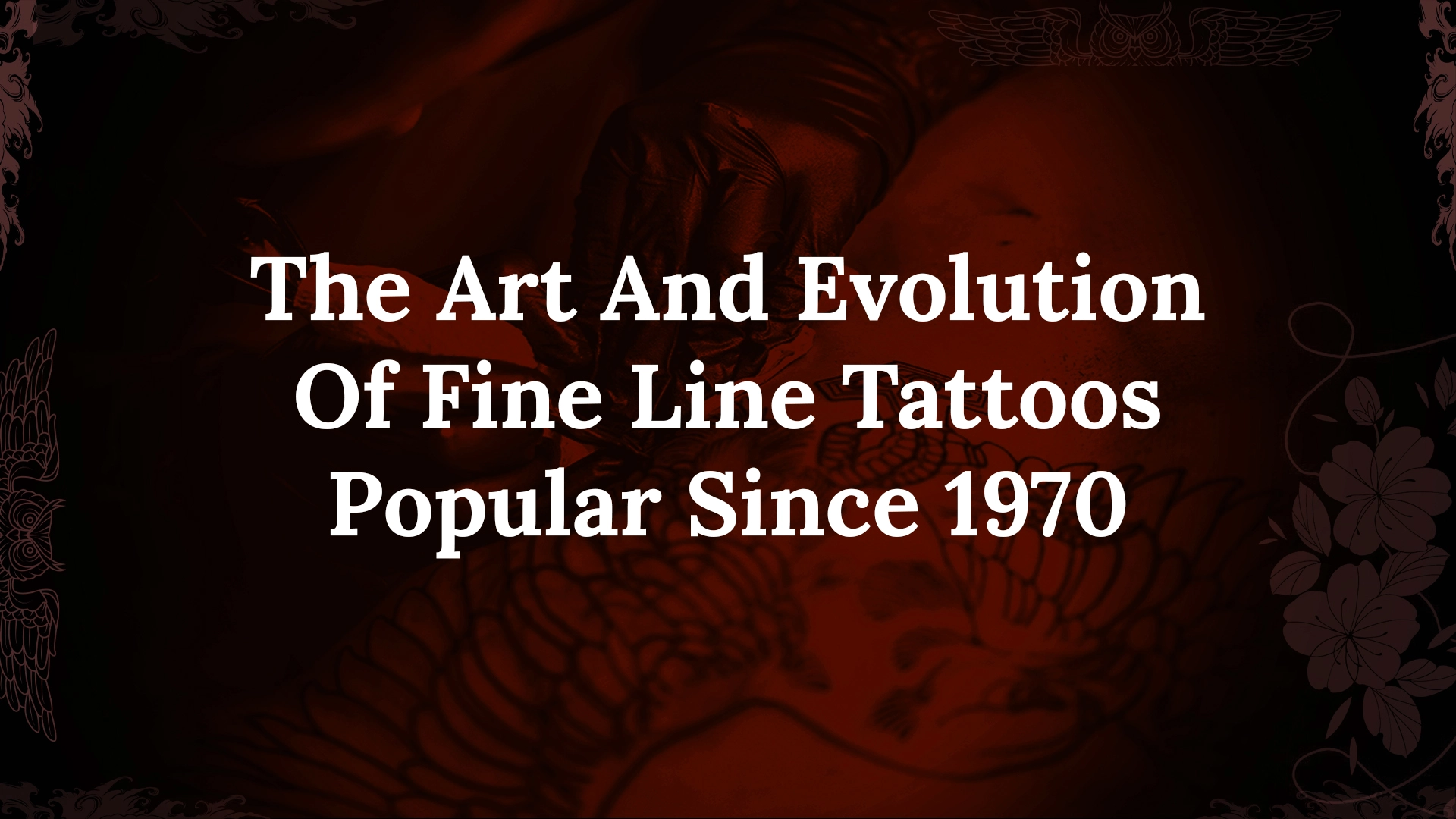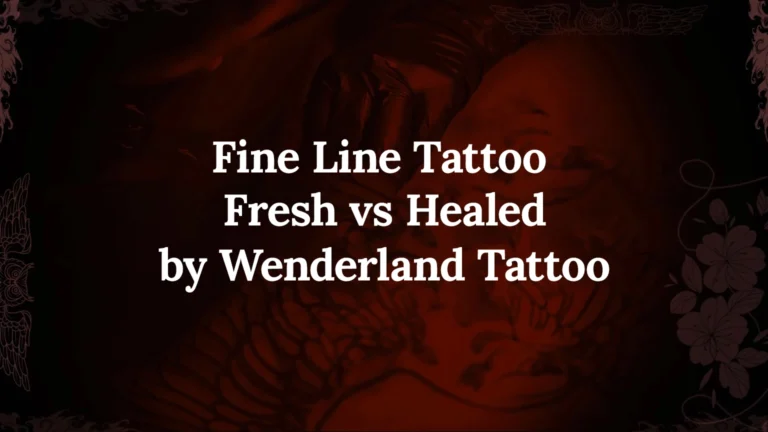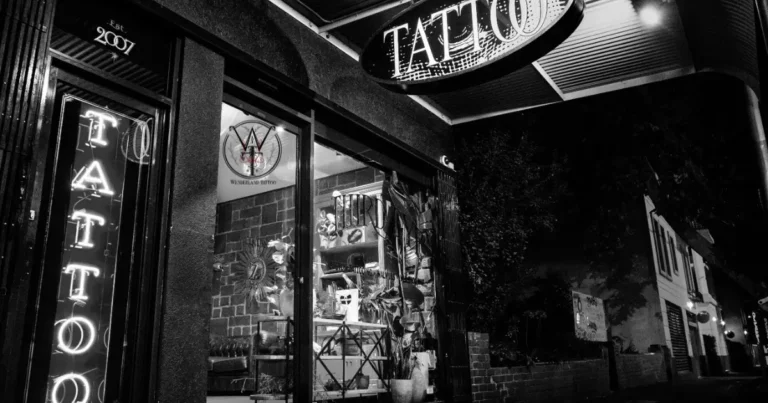Fine Line Tattoos, an art form that has captivated the world, are not just ink on skin; they are intricate masterpieces that tell stories, evoke emotions, and showcase exceptional skill. Let’s embark on a journey to explore the evolution of this tattooing style and understand the factors that make it a popular choice among art enthusiasts.
Characteristics of Fine Line Tattoos
Thin Lines and Intricate Details Fine Line Tattoos are distinguished by their use of incredibly thin lines, allowing for detailed and delicate designs. Artists showcase their precision and skill through the creation of intricate patterns and small, meaningful symbols.
Minimalistic Approach Embracing a minimalistic approach, Fine Line Tattoos often focus on simplicity and elegance. This style highlights the beauty of less-is-more, allowing the design to speak volumes without overwhelming the observer.
Versatility in Design From geometric shapes to nature-inspired motifs, the versatility of Fine Line Tattoos knows no bounds. Artists can seamlessly adapt this style to various themes, providing individuals with a wide range of creative possibilities for self-expression.
Popular Styles of Fine Line Tattoos
Geometric Fine Line Tattoo Geometry meets art in this style, where intricate shapes and patterns create visually stunning tattoos. Clean lines and precise angles characterize geometric fine line tattoo, making them a favorite among those who appreciate symmetry and order.
Botanical and Nature-inspired Designs Fine Line Tattoos often draw inspiration from the natural world. Delicate flowers, leaves, and wildlife come to life on the skin, capturing the beauty of nature in a subtle and refined manner.
Portrait and Realistic Fine Line Tattoo Artists showcase their talent by creating portraits and realistic scenes using fine lines. These tattoos capture the essence of individuals or scenes with impressive detail and subtlety.
Techniques Used in Fine Line Tattooing
Single Needle Tattooing FineLine Tattoos often involve the use of a single needle, allowing for precise control over line thickness. This technique requires exceptional skill and patience but results in tattoos with a level of detail that is truly remarkable.
Stippling and Dotwork Adding texture and depth to fine line tattoo, stippling and dot work involve the careful placement of tiny dots. This technique creates shading and intricate details, enhancing the overall visual appeal of the tattoo.
Contouring for Depth Artists use contouring techniques to create the illusion of depth in fine line tatoos. By skillfully manipulating line thickness and spacing, they achieve a three-dimensional effect that brings the tattoo to life.
Choosing the Right Artist for Fine Line Tattoos
Researching Artists’ Portfolios When considering a fine line tattoo, it’s crucial to research artists and view their portfolios. Look for consistency in their fine line work and ensure their style aligns with your vision.
Reading Reviews and Testimonials The experiences of others can provide valuable insights. Reading reviews and testimonials about an artist’s professionalism, hygiene practices, and artistic skills can help you make an informed decision.
Consultation Process Schedule a consultation with potential artists to discuss your ideas, ask questions, and gauge their understanding of your vision. A good artist will listen attentively and offer valuable input to enhance your concept.
Pain and Healing Process
Pain Levels Compared to Traditional Tattoos Fine Line Tatoos are generally less painful than their bolder counterparts due to the use of thinner needles. However, individual pain tolerance varies, and factors such as placement and design complexity also play a role.
Aftercare Tips for FineLine Tatoos Proper aftercare is crucial for preserving the quality of fine line tattoo. Keep the area clean, moisturized, and protected from excessive sunlight during the healing process to ensure vibrant and long-lasting results.
Duration of Healing While the healing process for fineline tattos is similar to traditional tattoos, the thinner lines may require extra care. On average, expect a healing period of two to four weeks, during which the tattoo may go through stages of peeling and fading before reaching its final appearance.
Celebrities and Fine Line Tattoos
Trendsetting Celebrities Celebrities have played a significant role in popularizing fine line tattoos. Icons like Rihanna, Justin Bieber, and Emma Watson have showcased their elegant and meaningful fine line ink, inspiring fans worldwide.
Influence on Popular Culture Fine Line Tattoos have become a symbol of sophistication and individuality, influencing fashion, art, and pop culture. The acceptance and celebration of fine line tattoos have opened doors for diverse expressions of personal style.
Red Carpet Moments The red carpet has witnessed a surge in fineline tattoos, with celebrities proudly displaying their ink as a fashion statement. These moments have contributed to breaking traditional norms surrounding tattoos, making them a mainstream form of self-expression.
Challenges and Considerations
Fading and Aging Concerns Fine Line Tattoos may be more prone to fading over time compared to bolder designs. Protecting your tattoo from excessive sun exposure and choosing an experienced artist can mitigate these concerns.
Fine Line Tattoos on Different Skin Types Artists must consider the texture and elasticity of different skin types when creating fine line tattoos. Collaborating with a skilled artist ensures that the tattoo adapts well to your unique skin characteristics.
Touch-up Requirements Fine Line Tattoos may require touch-ups over the years to maintain their vibrancy. Discussing potential touch-up needs with your artist during the initial consultation can help you plan for the long-term care of your tattoo.
Fine Line Tattoos in the Workplace
Acceptance and Perception As societal attitudes toward tattoos evolve, fine line tattoos are gaining acceptance in the workplace. However, it’s essential to consider the policies of your specific workplace and opt for placements that can be easily concealed if necessary.
Choosing Concealable Areas Opting for areas that can be covered by clothing allows individuals to enjoy the beauty of their fine line tattoos while maintaining professionalism in a work environment.
Changing Perspectives The increasing prevalence of fine line tattoos among professionals is gradually shifting perceptions. As more individuals in various industries proudly display their ink, stereotypes surrounding tattoos in the workplace are breaking down.
Cultural Significance
Historical Context in Different Cultures Tattoos have held cultural significance throughout history. Fine Line Tattoos, with their intricate details, find resonance in diverse cultural practices, representing everything from rites of passage to spiritual beliefs.
Modern Interpretations and Global Appeal In the modern era, fine line tattoos have transcended cultural boundaries. Artists draw inspiration from various traditions, creating a global fusion of styles that resonates with people from different walks of life.
Fine Line Tattoos as Personal Statements Individuals often choose fine line tattoos as a form of personal expression, conveying their beliefs, memories, or aspirations through the subtlety and precision of this art form.
The Future of Fine Line Tattoos
Technological Advancements in Tattooing As technology continues to advance, tattooing techniques are evolving. Fine line tattoos may benefit from innovations such as improved ink formulations, precision tools, and methods that enhance the longevity of the artwork.
Emerging Trends and Styles The world of fine line tattoos is dynamic, with new trends and styles constantly emerging. Artists experiment with innovative designs, pushing the boundaries of what is possible within the realm of fine line tattooing.
Anticipated Developments With the growing popularity of fine line tattoos, the industry is likely to see further advancements. From enhanced pigments to cutting-edge tattooing equipment, the future promises exciting developments in the world of fine line ink.
Conclusion
In conclusion, the art and evolution of fine line tattoos have transformed the world of body art. From its historical roots to the present day, fine line tattoos have become a canvas for self-expression, creativity, and individuality. Embrace the artistry, explore the possibilities, and let your story be told through the delicate lines that grace your skin.
FAQs (Frequently Asked Questions)
Are fine line tattoos suitable for everyone?
Fine line tattoos are versatile and can be adapted to suit various tastes. However, individual preferences, pain tolerance, and skin type should be considered before getting inked.
How do I choose the right fine line tattoo artist?
Research artists, review portfolios, and schedule consultations to find an artist whose style aligns with your vision. Reading testimonials and reviews can also provide valuable insights.
Do fine line tattoos fade more quickly than traditional tattoos?
While fine line tattoos may be more prone to fading, proper aftercare and protection from excessive sun exposure can help maintain their vibrancy over time.
Can fine line tattoos be done in color?
Yes, fine line tattoos can incorporate color. However, the style often leans towards black and gray tones to emphasize the precision and intricacy of the lines.
What is the future of fine line tattoos in the tattooing industry?
The future holds exciting possibilities for fine line tattoos, with anticipated developments in technology, ink formulations, and innovative styles pushing the boundaries of this art form.





